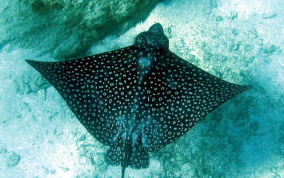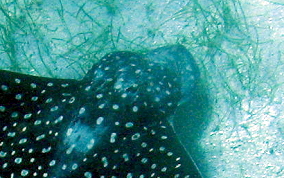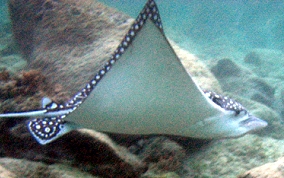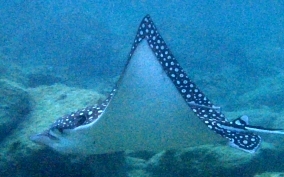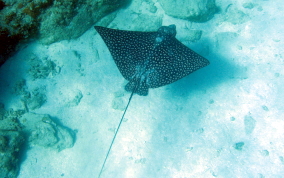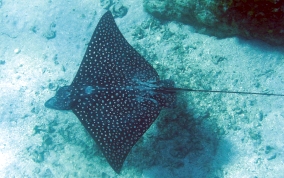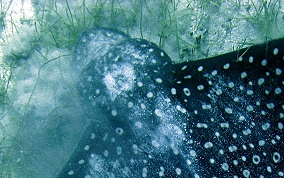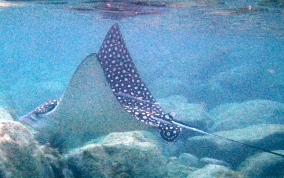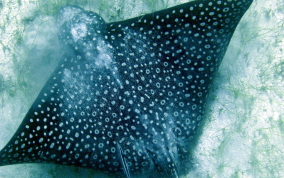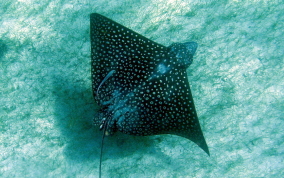Spotted Eagle Ray
Aetobatus narinariThe spotted eagle ray is considered as "Near Threatened" by the World Conservation Union (IUCN)With up to an 8 foot wing span, the Spotted Eagle Ray is the largest animal that lives as a permanent residence in the waters of St. John. A special treat is to see one of these ethereal creatures, gliding through the water. They have a mid-night blue top surface with a pattern of circular markings which, like zebra stripes are different for every individual, and a white bottom surface. Weighing up to 570 lbs. and a total length, including their long whip tail, of up to 16 feet in length. They cruise sea grass bed for mollusks, crustaceans, bony fishes and sea urchins which are some of their prey species. When doing so they extend their It is also known as a bonnet ray. They occasionally breach the surface to rid themselves of sharksuckers and other clinging hitch-hikers. For more detailed information Follow this Link (external link). See my youtube video of a Eagle Ray breaching the surface right next to me as I snorkeled above him. Included is a slow motion review and then after he re-entered the water. https://www.youtube.com/watch?v=3CPM-p-1KWk
ICUN
Status:
Near Threatened A2ace
ver 3.1
Pop. trend: decreasing
http://www.iucnredlist.org/details/39415/0
